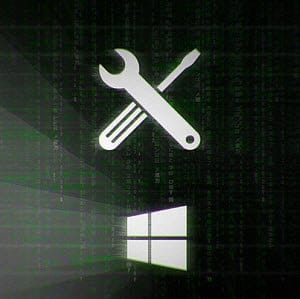Since releasing Windows 10, Microsoft has been slowly moving items from the legacy Control Panel to the Settings app. One of the newly added control panel items, starting with build 15019, is the Troubleshoot tool. It helps you fix various hardware, services, and programs that aren’t working correctly.
When Windows 10 Creators Update is released to the public (expected in April), you’re going to find most of those tools in the modern Windows Settings app. Here’s a look at where to find the Troubleshoot section and how to run them.
Windows 10 Creators Update Troubleshooting Tools
To open the troubleshooting tools, head to Settings > Update & Security > Troubleshoot.


Here’s a look at the troubleshooters that are included as of build 15025:
- Internet Connections: Fix problems connecting to the Internet or websites.
- Playing Audio: Fix problems with playing sound.
- Printer: Find and fix problems with your printer.
- Windows Update: Resolve issues that prevent you from updating Windows.
- Blue Screen: Troubleshoot errors that cause Windows to stop or restart unexpectedly – the BSOD or GSOD.
- Bluetooth: Find and fix problems with Bluetooth devices.
- Hardware and Devices: Find and fix problems with hardware.
- HomeGroup: Fix problems with viewing computer or shared files in a Homegroup.
- Incoming Connections: Fix problems with incoming computer connections and Windows Firewall.
- Keyboard: Find and fix problems with your computer’s keyboard settings.
- Network Adapter: Fix problems with wireless and other network adapters.
- Power: Fix problems with your computer’s power settings to conserve power and extend battery life.
- Programs Compatibility Troubleshooter: Fix problems with running old programs on this version of Windows.
- Recording Audio: Fix problems with recording sound on your PC.
- Search and Indexing: Find and fix problems related to Windows Search.
- Shared Folders: Fix problems with accessing files and folders on other computers on your network.
- Speech: Set up the Microsoft used with your PC to work with programs like Cortana and Skype.
- Video Playback: Find and fix problems playing movies, television, and video files.
- Windows Store Apps: Troubleshoot problems that may prevent Windows Store Apps from working properly.
Run Windows Troubleshooters
Select the troubleshooter you need and click the button to run it. Then follow the instructions provided by the troubleshooter wizards that pops up.


Here is an example of running the Power troubleshooter. Similar to the legacy version, you can have it fix a problem automatically and provides detailed information about a problem and you can print it out if you want.


If you’re running an older version of Windows 10 (or Windows 8 or 7) you can still access the troubleshooters by opening Control Panel and select the Troubleshooting icon.


Then you can go through and find the proper troubleshooting tool for the problem you’re having and work through the wizard.


Depending on the problem you’re having with your system, this is a good place to start, but in my experience, it’s not a magic wand for fixing complex issues. These troubleshooters are geared more at solving basic issues. Still, it’s nice to see that Microsoft is moving utilities like these to a central location that’s modern and clean. Compared to the legacy version, finding the tool you need is much easier.
So, start here when your Windows 10 device is acting up and if you still can’t seem to get things working correctly, jump in our Windows 10 Forums. We have a knowledgeable community there – including us writers that will try to help you out.
1 Comment
Leave a Reply
Leave a Reply








Ziggy
February 7, 2017 at 6:28 pm
Brian, thanks for the informative article. Just a question with this new edition of Windows 10, if I may indulge.
Since the last update of Windows 10, version 1607, build 14393.693, all has been running smoothly on my older computers and that’s where I want to leave them – so will the Creator’s edition be a mandatory update for Win 10 Home users?